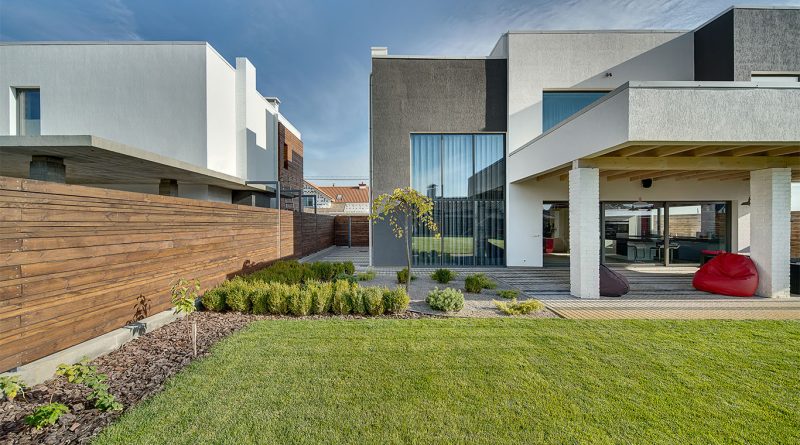The Rise of Modern Box Houses Taking Over Los Angeles
Over the past decade, Los Angeles has seen a proliferation of modern “box houses” reflecting changing social dynamics and the demand for more space. While many homebuyers are drawn to the clean lines and spacious interiors, critics argue these boxy structures lack character and uniform neighborhoods. This article explores the origins, appeal, and debates surrounding LA’s modern box houses, and considers their future evolution and impact on urban aesthetics.
Architectural Manifestation of Cultural Shifts
The sleek, pared-down aesthetic of modern box houses directly mirrors shifts in 21st century culture and tech-driven capitalism prioritizing efficiency and functionality over decoration. As society embraces minimalism across industries from home goods to digital interfaces, Los Angeles real estate has followed suit. Homebuilders are responding to demand for open floorplans and ample living areas with these cost-effective box structures stripped of extraneous ornamentation.
The Trend Toward Maximizing Square Footage
Behind the proliferation of box houses lies buyer hunger for more space. A 2020 study revealed the average LA single-family home expanded by nearly 200 square feet between 2010-2019. Real estate agent Bret Parsons observes cheaper, quicker box house construction allows buyers “to maximize square footage and achieve space as the ultimate priority.” For developers, too, focusing funds on usable areas over decorative trim boosts profit margins on spec homes.
The Downsides: Loss of Diversity and Neighborhood Character
However, many critics argue neighborhoods dominated by modern boxes lose the architectural diversity and “sense of place” Los Angeles is known for. Long-time Eagle Rock resident Terry Lee lamented cookie-cutter boxes displacing traditional bungalows, eroding distinctive neighborhood ambience. As modern mansions replace smaller buildings on single lots, critics also argue McMansion-ization destroys community character and eliminates modest family housing options.
Preserving History While Accommodating Growth
In response to runaway home sizes, the city adopted ordinances like the Baseline Mansionization Ordinance to curb out-of-scale buildings in certain neighborhoods, balancing growth and preservation. Santa Monica took a different approach, relaxing codes to encourage variety beyond boxes. And historic designations in pockets of Hancock Park ensure new construction aligns with existing architectural heritage. Regulations alone can’t dictate aesthetics, but policy has a role maintaining community integrity.
The Influence of Urban Aesthetics on Property Values
On a macro scale, research shows coordinated urban aesthetics directly impact real estate values. Homes in new developments adhering to a unified modern aesthetic often sell at a premium. This phenomenon highlights buyers’ preference for the sleek contemporary ambience box houses create when concentrated together versus scattered amidst other styles.
Echoing Globalization’s Generic Effect
Some critics draw parallels between architectural globalization in major metropolises losing distinctiveness through homogenization. Box houses reflect and exacerbate this effect within Los Angeles as ubiquitous glass-and-steel high rises insert generic modernity often at odds with local vernacular styles. Standardized modern aesthetics risk disconnecting buildings from the culture and history of the communities hosting them.
Evolution of the Box House Form
The much-maligned box house continues evolving in form and features. Many contemporary versions incorporate wood or metallic accents, expanses of glass, living walls, and exterior paint colors to break up bulk. High-end boxes may include solar panels, green roofs, EV chargers, and other sustainability elements. Rather than bare-bones slabs, today’s box houses adaptive to both changing aesthetics and ethos.
The Ongoing Debate Over Character Versus Practicality
As box houses multiply from Hollywood Hills to Long Beach, debates rage about the structures’ impacts on neighborhood character and their future. Supporters argue simplicity, clean lines, and ample light appeal to modern sensibilities, especially younger buyers prioritizing function over form. Detractors counter much of LA’s architectural magic stems from idiosyncrasies and one-of-a-kind buildings with character no box can match. The conflict distills down to a classic battle between unornamented practicality and decorative diversity.
In architecturally diverse Los Angeles, glass-sheathed modern boxes will likely never fully eclipse vibrant existing building styles. Their proliferation speaks to 21st century priorities from cost efficiencies to sustainable technologies. While jarring when directly adjacent to traditional homes, concentrated clusters create sought-after contemporary urban ambience reflected in rising property values. As cities evolve, box houses fill a particular niche. Their role remains controversial but impact undeniable in shaping both housing options and the aesthetics of Los Angeles moving forward.
